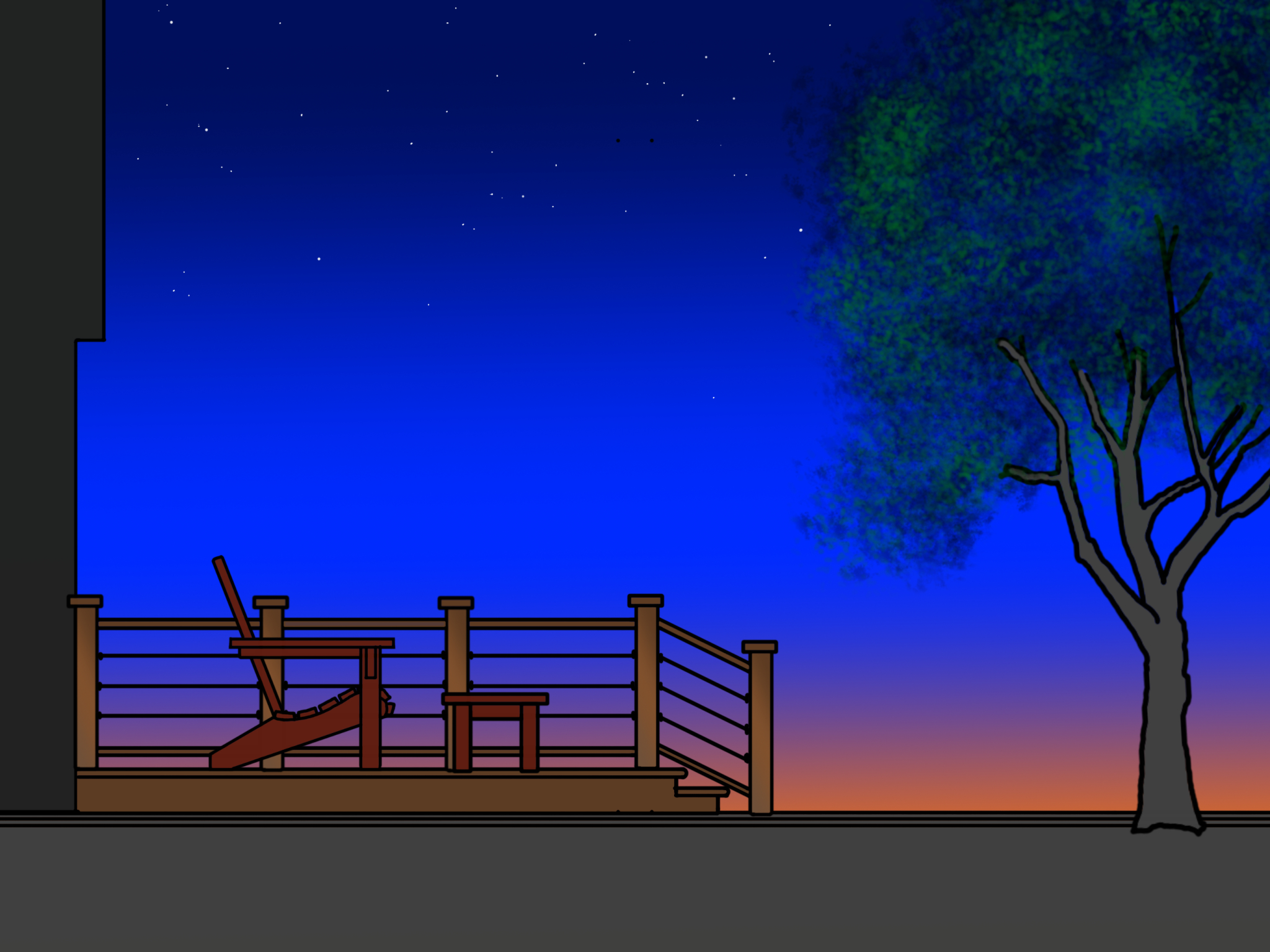I once read that the easiest ways to increase the sale price of your home were to paint the front door for a good first impression and add a deck to the back yard. I suppose adding a deck makes the back yard more enticing, perhaps even subconsciously saying to the buyer “purchase this home and you will relax on this deck every evening.”
Whatever the psychology or sales strategy may be, an evening with family or friends on a patio or deck can be quite relaxing and memorable – and even better with the right light. Or, more to the point, an evening outdoors can be even better without the wrong light.
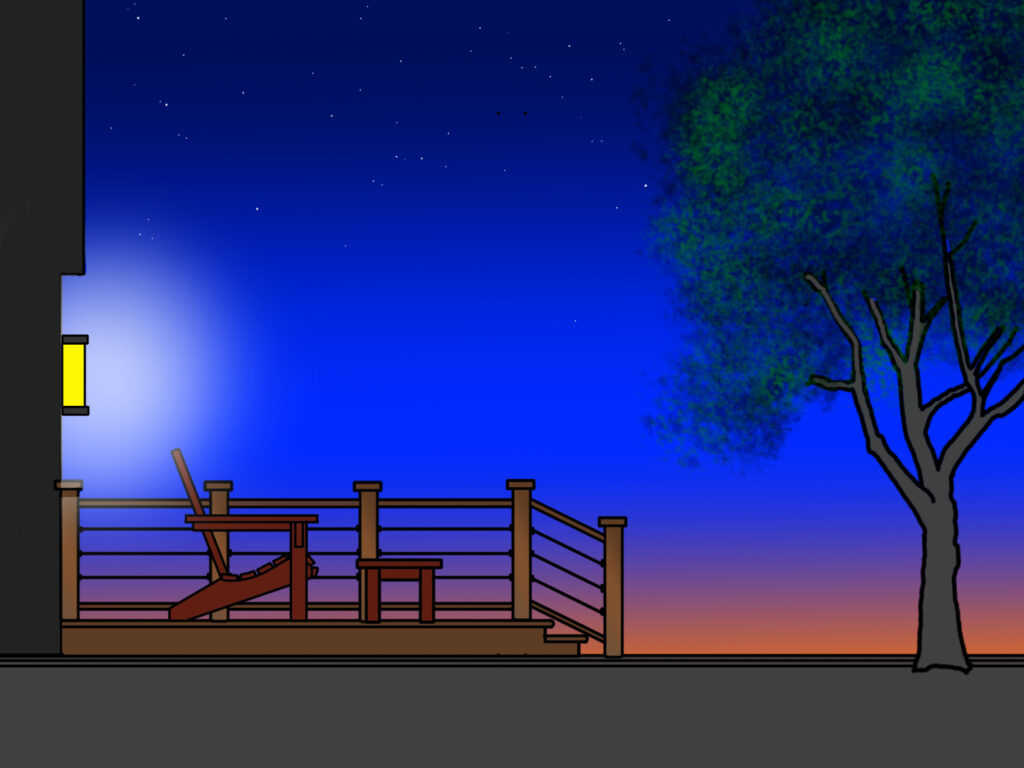
Most of our homes have a lovely wall sconce out back that efficiently delivers glare to every pair of eyes in the yard. These fixtures are often the same poorly-conceived fixtures used on front porches, and look best when turned off during the day. At night, they silently drain away our comfort and relaxation while making it seem darker outside while obscuring our view of stars and distant lights. If you want a little too much of an explanation of why these sconces hurt – and what sconces might be better – check out my previous 1THING post on front porch lights.
But this 1THING: New Build post is not about wall sconces. Honestly, I could do without the sconces entirely on the back patio or deck. If I force myself to choose just one layer of light to hard-wire on a new deck, it would be step or deck lights.
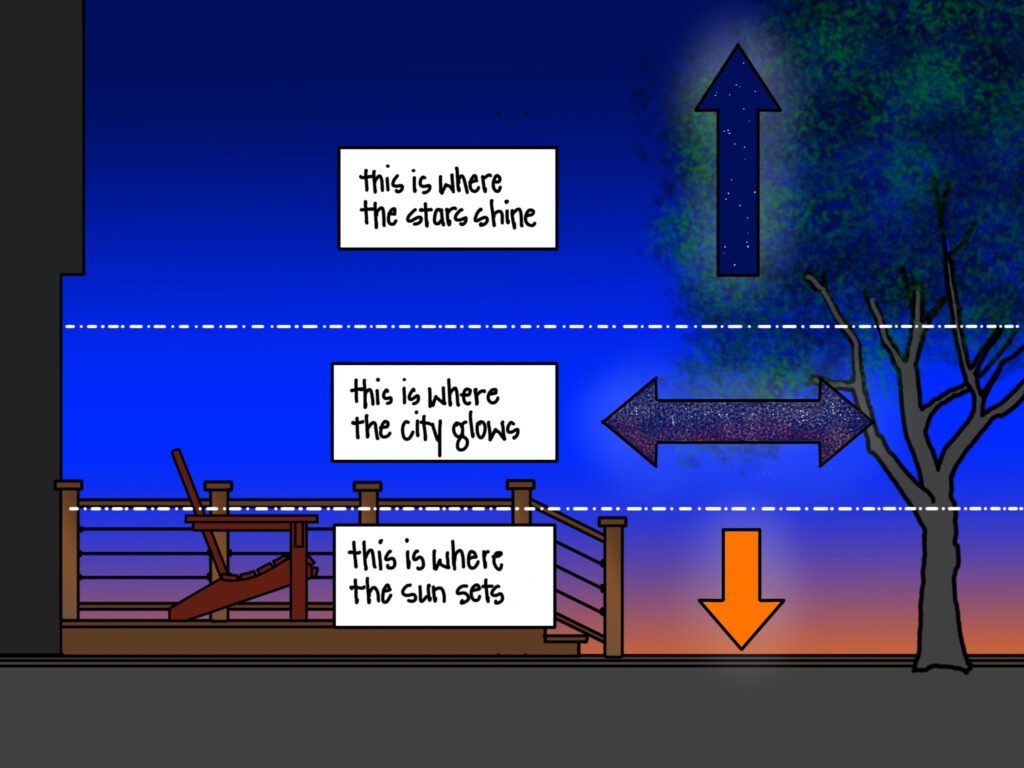
This is not a new idea for me, but as I sketched through the concepts for today’s post I stumbled on a nature-inspired justification for the low, amber light provided by a good step light. In the sketch above I divide light into three zones: where the sun sets at the horizon, where our eyes can see the city glowing (or distant neighbors), and where the stars shine.
We should avoid putting any light where the stars shine. Any light shining up and out just spoils the view, wastes electricity, and disrupts wildlife. There is no reason for it unless you are an airport.
We don’t need any light where the city glows, either, because we want our view to be uninterrupted. There is light enough out there without us adding sconces or similar to contribute. Keep this zone dark.
We do need a little light to move around comfortably and safely. This light should go where the sunset goes – low down and pointed at the ground.
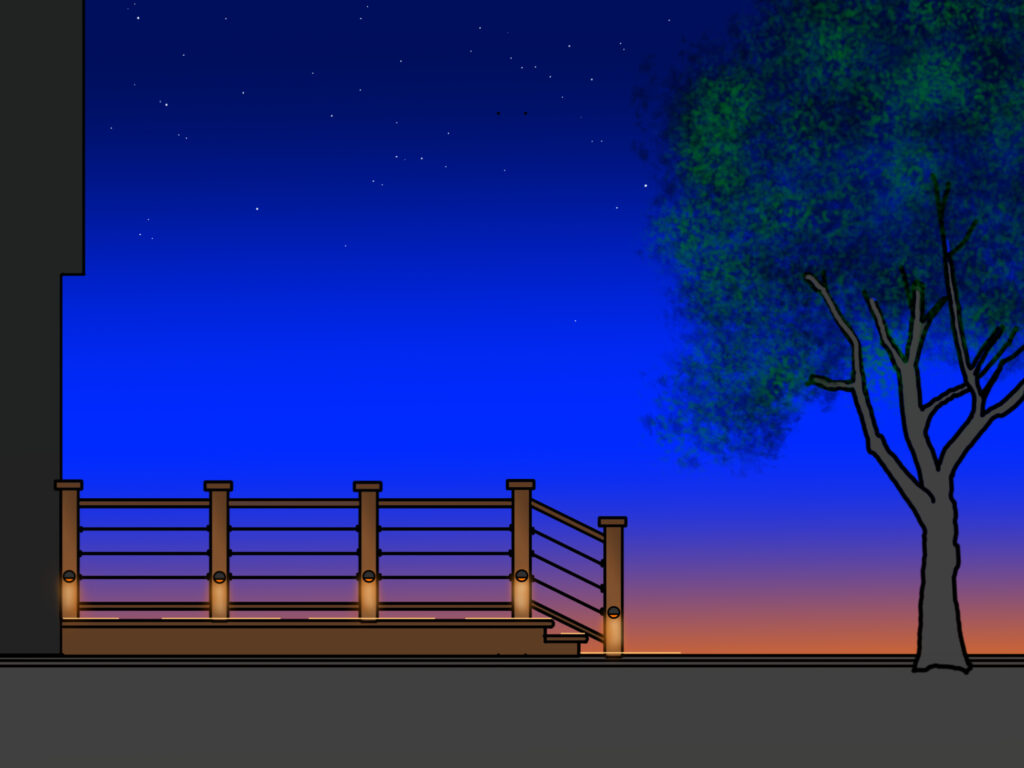
In the sketch above, I added a series of step lights (also called deck lights) to the posts that support the railings on this deck. These small fixtures can be placed on steel, wood, and composite posts, added to built-in benches, and installed on walls. Deck lights are most often low voltage, making for an easier installation, while many step lights can be found in both low and line voltage. The right step/deck light can add a lovely soft glow to the deck itself, reflecting gently up on the faces of your companions while keeping most of the sky free for enjoyment.

As you most likely know by now, not all step and deck lights are created equal. Sadly, most fit into the category of glare grenades (smaller than glare bombs, but no less deadly to our enjoyment). The fixtures on the left above have large glass or acrylic diffusers that put light in all directions, which includes wasting light and putting harmful light directly in your eyes. Look for shielded fixtures that block any view of the bulb or any visible glass/plastic. These will direct light where needed (down) and keep it out of your face.
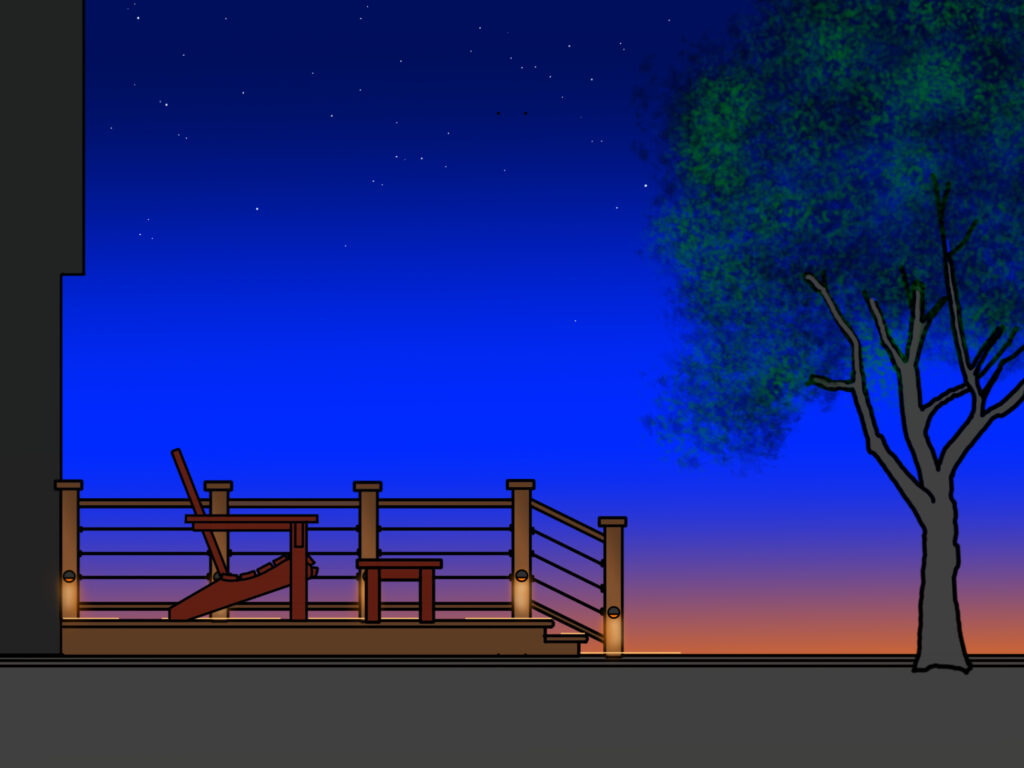
Don’t have posts or railings? Get creative. You can install short posts. At our last home we had a patio, so I built wooden planters that divided the space – and gave me an excellent mounting place for step lights. You can install lights underneath benches, or put path lights in planting beds around a patio. Whatever you do, just keep light below the horizon line and fully shielded.
The next time you are relaxing on your deck, enjoy a better view with shielded, low deck lights. Sunsets and stars are more beautiful than anything we can create. Why compete?
